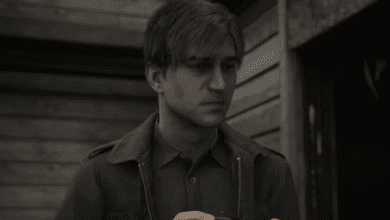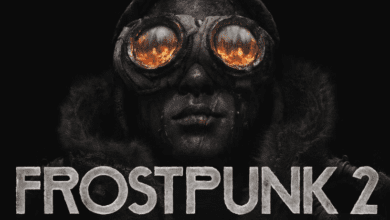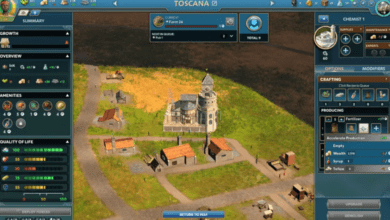God of War Ragnarok Review: A Stunning Sequel with Some Flaws
God of War Ragnarök isn’t the cleanest sequel, but it leaves Sony’s angriest franchise in a great place. Sony’s God of War series has long been hailed as one of the cornerstones of action gaming, and Ragnarök continues that legacy in epic style. After the success of the 2018 reboot, expectations were sky-high, and while Ragnarök delivers in many areas, it’s not without its missteps. Whether you’re a PlayStation purist or experiencing it on PC, this game is an immersive blend of myth, combat, and storytelling. But is it flawless? Not quite. Let’s dive in.

A PC Gamer’s Dream, But With a Few Hiccups
The novelty of launching a previously PlayStation-exclusive game like God of War Ragnarök from a PC is still a thrill, especially when you’ve grown accustomed to the high graphical standards of PC gaming. The Steam launch of Ragnarök certainly brings with it some new freedoms such as the ability to tweak graphical settings but also exposes how Sony’s highly polished formula can feel somewhat safe in the wider PC gaming landscape.
Solid, But Not Spectacular PC Performance
With God of War Ragnarök, PC gamers can expect a visually stunning experience, even on slightly older hardware. My aging RTX 2080 Super handled the game remarkably well, consistently delivering 80-100 frames per second at 1080p with settings on High and DLSS enabled. While the game isn’t pushing the graphical boundaries like some of the latest AAA titles, its art direction remains a strong point, blending realism with Norse mythology in breathtaking environments.

However, not all realms in the game run smoothly. For example, my frame rate dipped noticeably when visiting Svartalfheim, though other realms performed much better. The “Realm Between Realms,” a transitional space between locations, was particularly frustrating as my FPS consistently dropped to 20-30 in this area. Fortunately, these performance issues are minor and can likely be resolved with future patches.
Expansive and Beautiful, But Not Groundbreaking
God of War Ragnarök shines in its ability to immerse players in Norse mythology, but the sequel feels more like a continuation of the 2018 game than a major evolution. You won’t find the same technological innovations here that you would in newer titles like Alan Wake 2 or Star Wars Outlaws. Instead, you’ll get a visually stunning, but familiar experience that pushes art direction over graphical prowess.
A Balanced Approach to Graphics
Where Ragnarök truly excels is in its balanced approach to graphics. The game doesn’t require the latest, most expensive GPU to look great. Even with a card that’s a few years old, like the RTX 2080 Super or something in the “60” range, the game manages to look and play like a dream. This is largely due to its PS4 roots, which keeps hardware requirements accessible to a broader audience.
Minor Annoyances, But Nothing Game-Breaking
While most of the game’s performance is smooth, occasional bugs do surface. For instance, turning down tessellation helped fix some frame rate drops, especially in specific areas like the Realm Between Realms. Jetpack Interactive, the team responsible for porting the game to PC, has already issued several patches, so it’s likely that these issues will be addressed in the near future.

The Story: A Tighter Narrative That Sometimes Wanders
One of God of War 2018’s strengths was its focused narrative, revolving around Kratos and Atreus’ journey to spread the ashes of Kratos’ wife at the highest peak in the realms. In contrast, Ragnarök opts for a more sprawling approach, and while it’s great to see beloved characters fleshed out further, the narrative sometimes feels stretched too thin.
A Slower Start, But Strong Character Development
The story starts off slower than you might expect, with Kratos, Atreus, and their allies spending much of the early game navigating prophesies and internal struggles rather than fighting off gods. While the character-driven moments are compelling, especially the dynamic between Kratos and Atreus, the game lacks the same narrative drive that made the 2018 instalment feel so urgent.

Kratos is more introspective than ever, learning to connect with Atreus as his son seeks independence. Freya, meanwhile, wrestles with her own grief and trauma following the events of the previous game. These moments are emotionally impactful, but they don’t always align with the pacing of the main story.
The Battle with Thor and Odin: Not Quite the Endgame We Expected
Most fans anticipated an epic showdown with Thor and Odin following the 2018 game’s ending, which teased their inevitable clash. Ragnarök subverts these expectations by focusing less on prophecy and more on the personal journeys of its characters. While this offers depth, it can also lead to long periods where the main story feels stalled, as the characters wander from realm to realm, dealing with side quests that don’t always tie neatly into the larger plot.
Combat: Kratos’ Arsenal Expands
Where God of War Ragnarök excels is in combat. Kratos’ familiar Leviathan Axe and Blades of Chaos return, but this time, he’s also equipped with new tricks that make combat feel fresh and exhilarating. His arsenal expands with the introduction of an endlessly respawning spear, adding a strategic layer to the already robust combat system.

Mastering the Elements: Status Effects Take Centre Stage
One of the biggest changes to combat is the emphasis on status effects like Frost and Burn. Inflicting these effects on enemies allows Kratos to switch weapons and exploit weaknesses, making fights more dynamic and rewarding. It’s no longer just about raw strength but about how you can use Kratos’ different abilities in tandem to dominate the battlefield.
Switching weapons feels smoother on PC, thanks to intuitive keyboard controls. I found myself switching between the Axe and Blades more frequently than I ever did on a controller. That said, the default key bindings may take some getting used to, as holding down certain keys for attacks can feel a bit awkward at first.
Gear Customization Adds Depth
Gear customization also sees a significant upgrade in Ragnarök. Rather than simply boosting stats like Strength or Vitality, each piece of gear now comes with unique perks that cater to specific playstyles. Whether it’s an armour set that boosts your Runic attacks or a shield that supercharges Kratos’ shield bash, these options allow players to tailor Kratos’ combat abilities to their preferences.
Unlike many other RPGs where gear becomes obsolete after a few hours of gameplay, Ragnarök allows you to upgrade your favourite sets throughout the game. This keeps them relevant, even in the later stages, and adds a layer of strategy when choosing which gear to upgrade.
The Good and the Bad: What Works and What Doesn’t
God of War Ragnarök is undoubtedly one of the most visually stunning and mechanically solid games of recent years, but it’s not without its flaws.
What Works:
- Character Development: Kratos and Atreus’ relationship is at the heart of the story, and their interactions are some of the most emotionally resonant moments in the game.
- Combat: The expanded moveset, emphasis on status effects, and deep gear customization make battles more exciting and strategic than ever.
- PC Optimization: For the most part, Ragnarök runs beautifully on PC, especially for players with mid-range hardware.
What Doesn’t:
- Pacing Issues: The story occasionally meanders, with long stretches where little seems to happen. This can make the game feel slower than it should.
- Bugs and Performance Drops: While relatively minor, some areas of the game suffer from frame rate issues and other bugs, particularly in transitional spaces like the Realm Between Realms.
- PSN Requirement on PC: The necessity of having a PlayStation Network account on Steam is an odd and inconvenient choice for a single-player game.
A Great Game with Room for Improvement
In many ways, God of War Ragnarök is the sequel fans have been waiting for. It builds on the solid foundation of the 2018 reboot while adding enough new elements to keep things fresh. The game’s combat is as satisfying as ever, and the characters continue to be a highlight. However, pacing issues and minor performance hiccups prevent it from being a perfect sequel.
If you’re a fan of the series, God of War Ragnarök is a must-play, even with its shortcomings. Whether on PlayStation or PC, this is a journey worth taking, especially if you’re invested in Kratos and Atreus’ story. While not flawless, Ragnarök leaves the franchise in a strong position for whatever comes next.






